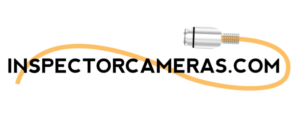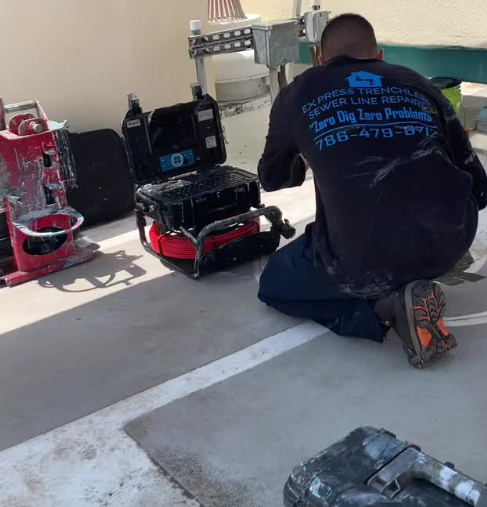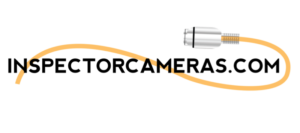An inspection camera is a game-changer in the world of home inspections.
This innovative tool allows inspectors to access hard-to-reach areas, providing detailed visual data that can reveal potential issues hidden from the naked eye.
The use of an inspection camera not only increases efficiency but also enhances accuracy during property evaluations.
No longer will inspectors have to rely solely on their senses and experience; now they have technology on their side, offering them unprecedented insight into a property’s condition.
Table of Contents:
- The Role of Technology in the Home Inspection Industry
- Benefits of Using Technology in Home Inspections
- Types of Technologies Used in Home Inspections
- Anticipating the Future of the Home Inspection Industry
- FAQs in Relation to Inspection Camera
- Conclusion
The Role of Technology in the Home Inspection Industry
Technology’s relentless march forward has left few industries untouched, and home inspections are no exception. The advent of new tools and methodologies is reshaping how inspectors conduct their work, leading to more precise results while enhancing efficiency.
Impact of Technology on Traditional Home Inspections
Gone are the days when home inspections were predominantly manual tasks heavily reliant on an inspector’s expertise and intuition. While these elements remain crucial today, technological innovations have introduced a fresh layer of accuracy into this process.
Digital cameras may differ greatly in quality; however, high-quality RGB digital cameras can capture microscopic visual data during assessments. This enables detailed reviews where inspection professionals visually examine data gathered from various parts of a property.
How Tech-Based Home Inspections Are Transforming the Field
New technologies aren’t merely improving traditional practices; they’re also ushering entirely novel approaches to home inspections. For instance, outdoor drones equipped with Elios 3’s camera allow inspectors safe access to hard-to-reach places like rooftops or tall structures. Find out about Elios 3 Camera Outdoor Drones here.
- This helps avoid entering potentially dangerous areas by collecting visual data inside assets remotely – be it commercial work where generally tech-based solutions are preferred by inspectors or residential properties with challenging access points.
- Besides drones and handheld devices such as the Scout 3-Pro Plus (whose price point makes them affordable options), there exist other forms too.
- You’re collecting visual data indoors using gamma ray radiography devices that help detect structural anomalies within walls without invasive procedures. Learn more about Gamma Ray Radiography Devices Here.
- Infrared thermal imaging cameras collect infrared showing heat loss spots which might suggest insulation issues.
These examples illustrate how technology is transforming fieldwork traditionally conducted manually into something much safer than ever before.
Key Takeaway: Home inspections have undergone a technological revolution, swapping manual methods for digital precision. High-quality cameras capture detailed visual data, drones access hard-to-reach areas safely, and tools like gamma ray radiography devices and infrared thermal imaging cameras detect anomalies non-invasively – making home inspections safer and more efficient than ever before.
Benefits of Using Technology in Home Inspections
The home inspection industry is experiencing a technological revolution. Advanced tools such as thermal imaging cameras, drones, and cloud-based software are transforming the way inspections are conducted, enhancing both efficiency and accuracy.
Advantages of Using Advanced Tools During an Inspection
Incorporating technology into home inspections has multiple benefits. High-tech devices not only streamline processes but also improve precision by providing comprehensive insights that traditional methods may overlook.
A case in point is the use of sophisticated pipeline inspection cameras for remote visual data collection inside drains and sewers. These gadgets allow inspectors to avoid entering potentially dangerous areas while capturing microscopic visual details that can be crucial for detecting minor defects or blockages within pipelines – thus preventing future issues from escalating.
Drones too have become indispensable assets in property assessments due to their ability to collect visual data remotely from hard-to-reach places like roofs or tall structures without risking safety hazards associated with climbing ladders or scaffolding. Their high-quality RGB digital camera capabilities ensure clear image capture even under challenging photographic conditions, thereby helping inspectors collect accurate visual data indoors as well as outdoors irrespective of weather conditions.
Mirror Accessories Included: Learn How It Enhances Visibility Further
- They allow better visualization around corners and tight spots otherwise difficult to reach.
- The mirror accessory helps reflect light onto dark surfaces, thus improving image clarity considerably even under low-light scenarios.
All said and done, it’s evident that modern technologies offer a multitude of advantages over traditional methods, making them an indispensable part of contemporary house evaluations. Remember, the next time you hire an inspector, ask if they utilize the latest technology.
Types of Technologies Used in Home Inspections
The landscape of home inspections has been drastically reshaped by the introduction and adoption of various technologies. These innovative tools have not only streamlined the inspection process but also enhanced inspectors’ ability to identify potential issues that may be invisible to the human eye.
Employing Thermal Imaging Cameras for Unearthing Hidden Problems
A significant technology making waves in this sector is thermal imaging cameras, a vital tool for any inspector’s toolkit. Unlike traditional models, these high-quality RGB digital cameras are capable of detecting temperature variations within properties, enabling them to uncover hidden problems such as moisture damage or heat loss which don’t present ideal photographic conditions otherwise.
Say there’s insulation missing from a part of your wall; it would appear on a thermal image due to its cooler temperature compared with surrounding areas. Similarly, water leaks behind walls or under floors can make those regions appear colder too.
Besides helping inspectors collect visual data showing such discrepancies without physically entering potentially dangerous zones like attics where structural integrity might be compromised due to unseen damages – they ensure safety alongside accuracy during assessments.
Leveraging Drones for Comprehensive Roof Assessments
Drones represent another transformative technology widely used by contemporary home inspectors today. Specially designed drones like Elios 3’s camera outdoor drones empower professionals to capture microscopic visual data remotely – negating the need for physical access to hard-to-reach spots on roofs and chimneys.
This proves particularly beneficial when you’re collecting visual data indoors or surveying tall structures wherein manual evaluation could entail considerable safety risks.
Moreover, commercial work scenarios often see a preference towards drone usage given their capacity for detailed close-ups while maintaining a safe distance from hazardous sections, thereby aiding a more thorough assessment in less time and cost compared to conventional methods involving scaffolding, crane hires, and roof evaluations.
Lastly, mirror accessories offer an added advantage to inspect obscured portions effectively without disassembling components unnecessarily.
They are especially useful for plumbing system examinations, including drains and sewers, wherein an Anysun pipeline inspection camera fitted with mirrored attachments helps visualize the internal pipe condition accurately, facilitating timely maintenance decisions based on collected
Key Takeaway: Inspection cameras, thermal imaging tools, and drones are revolutionizing home inspections by offering detailed visual data in hard-to-reach areas. These technologies not only streamline the process but also enhance safety during assessments while reducing time and costs.
Anticipating the Future of the Home Inspection Industry
The future holds exciting prospects for the home inspection industry. The increasing adoption rates among virtual/remote inspections and other advanced technologies such as AI or machine learning are reshaping this field, promising more efficient and comprehensive evaluations.
Growing Popularity & Advantages of Virtual Inspections
The rise in popularity of remote house examinations is a significant trend shaping the future landscape. This innovative approach allows inspectors to collect visual data remotely using high-quality RGB digital cameras, eliminating travel time and expenses associated with traditional methods.
Beyond cost savings, these tools also enhance safety by allowing inspectors to avoid entering potentially dangerous areas during their assessments. They provide clients who may not be present at the site due to scheduling conflicts or geographical distance an opportunity to review inspector reviews visual data conveniently through cloud-based platforms that enable real-time sharing of reports.
Influence of Artificial Intelligence on Future Evaluations
Apart from remote inspections, another game-changing technology influencing future trends is artificial intelligence (AI) combined with machine learning algorithms which have shown great potential in enhancing efficiency within this sector.
These sophisticated technologies can analyze images captured by devices like Elios 3’s camera outdoor drones, identifying patterns invisible to the human eye thus enabling the detection of unseen issues effectively even when you’re collecting visual data indoors.
Machine Learning further enhances precision over time based on past experiences resulting in improved accuracy conclusions drawn from collected infrared data showing problem areas in the property structure. The automated report generation feature in many software solutions reduces manual labor significantly, thereby saving both time and effort and improving the overall operational efficiency process.
Sustainability and Energy Efficiency in Focus
As society becomes increasingly conscious about environmental sustainability and energy-efficient homes, emerging as a key area worth exploring down the line too. Government regulations are pushing builders to adopt eco-friendly construction techniques, fueling the demand for comprehensive energy audits as part of the standard housing assessment protocol, adding yet another dimension to the scope of work commercial work inspectors generally prefer to undertake.
Overall, technological
Key Takeaway: Future home inspections will be more efficient and comprehensive, thanks to the rise of remote evaluations using high-quality cameras, AI’s influence in detecting unseen issues, and a growing focus on environmental sustainability. It’s not just about saving time and money; it’s also about enhancing safety and precision.
FAQs in Relation to Inspection Camera
What does an inspection camera do?
An inspection camera, often a borescope or endoscope, enables detailed visual inspections of hard-to-reach areas such as pipes, vents, and behind walls.
What to look for when buying an inspection camera?
Consider factors like image quality, cable length and flexibility, durability of the device, lighting options, and whether it’s waterproof.
What camera do home inspectors use?
Home inspectors commonly use thermal imaging cameras for detecting hidden issues like leaks or insulation gaps. They may also utilize drones with cameras for roof assessments.
What is a visual inspection camera?
A visual inspection camera is a tool that captures high-resolution images in inaccessible spaces. It aids in identifying potential problems without invasive procedures.
Conclusion
Technology has undeniably transformed the home inspection industry.
The use of advanced tools, like the inspection camera, is now more common than ever.
This game-changer allows for a detailed visual assessment of properties that traditional methods can’t match.
From instant report generation to identifying unseen problems with thermal imaging cameras, technology brings efficiency and accuracy to another level.
Drones are also stepping up in this field by providing thorough roof assessments without risking human safety.
The future holds even greater potential as virtual inspections become mainstream and AI continues its disruptive influence on house evaluations.
If you’re ready to experience these benefits firsthand or want your property inspected with top-notch equipment such as an inspection camera, visit Inspector Cameras.


